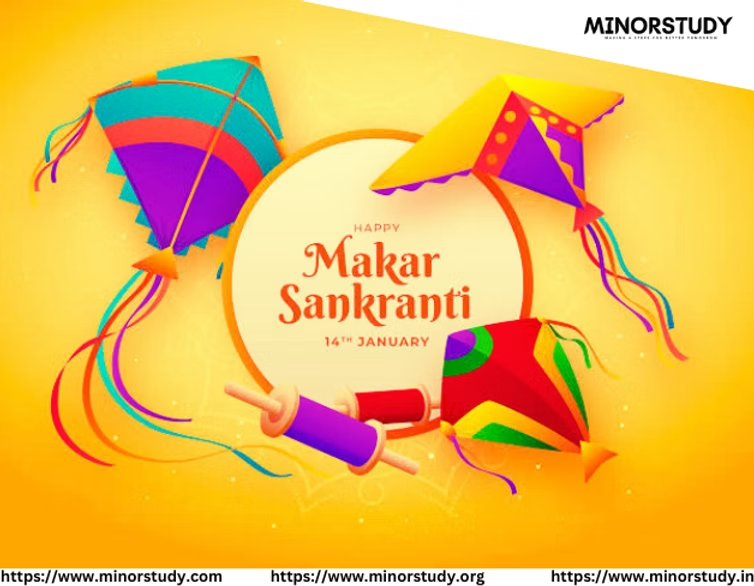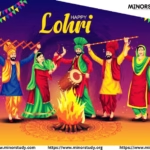🪁 7 Powerful Truths Behind Makar Sankranti That Will Brighten Your Life
🌞 Introduction: What is Makar Sankranti?
Makar Sankranti is one of the most vibrant, joyful, and spiritually significant festivals celebrated across India. Unlike many Indian festivals that follow the lunar calendar, Makar Sankranti is celebrated according to the solar calendar, usually on January 14th each year. It marks the transition of the Sun into the zodiac sign of Capricorn (Makara)—ushering in longer and warmer days and symbolizing hope, light, and new beginnings.
- 🌞 Introduction: What is Makar Sankranti?
- 📜 History of Makar Sankranti
- 📌 Key Facts About Makar Sankranti
- 📆 Timeline of Observance and Development
- 🙏 Significance of Makar Sankranti
- 💬 Frequently Asked Questions (FAQs)
- Q1: Why is Makar Sankranti always celebrated on January 14th?
- Q2: What is the religious significance?
- Q3: Why do people fly kites?
- Q4: What does til-gud symbolize?
- Q5: What should one do on Makar Sankranti?
- 🎉 Observance Across India
- 🌟 Importance in Our Lives Today
- 💡 Important Points to Remember
- 💌 Wishing on Makar Sankranti
- 🧭 Conclusion: Daily Life Impact of Makar Sankranti
Celebrated with kite flying, bonfires, sweets made of sesame and jaggery, fairs, and cultural gatherings, Makar Sankranti is more than just a festival—it’s a celebration of cosmic change and human gratitude.
📜 History of Makar Sankranti
Makar Sankranti has ancient Vedic origins, going back thousands of years.
The festival is mentioned in the Mahabharata. It is believed that Bhishma Pitamah waited for this auspicious time (Uttarayan) to give up his mortal life on the bed of arrows.
The word “Sankranti” is derived from the Sanskrit word “Sankramana”, meaning transition.
Sun worship is integral to the Vedas, especially the Rigveda, which glorifies Surya (the Sun God).
In Tamil Nadu, it is celebrated as Pongal, where people thank nature and cattle for a good harvest.
Makar Sankranti marks the end of the winter solstice and is one of the few festivals observed as per the solar cycle, ensuring a fixed date every year.
📌 Key Facts About Makar Sankranti
| 📅 Date | January 14th (mostly), sometimes 15th |
|---|---|
| 🌠 Zodiac | Sun enters Capricorn (Makara) |
| 📚 Mentioned in | Vedas, Mahabharata |
| 🔥 Customs | Bonfires, kite flying, sweets |
| 🥥 Offerings | Sesame, jaggery, khichdi, sugarcane |
| 🕉️ Spiritual Meaning | Light over darkness, new beginnings |
📆 Timeline of Observance and Development
| Period | Description |
|---|---|
| Vedic Period | Celebrations linked with Sun God (Surya) worship |
| Mahabharata Era | Bhishma Pitamah chose this day to leave his body |
| Medieval India | Spread of diverse regional customs like Pongal, Lohri |
| Modern Times | Kite festivals, fairs, and pan-India observance on a fixed date |
| Contemporary India | Eco-awareness, promotion of local culture, sustainable practices through traditional values |
🙏 Significance of Makar Sankranti
1. Spiritual Awakening
This day marks the Uttarayan, the sun’s journey towards the northern hemisphere. Spiritually, it symbolizes inward awakening, optimism, and dharma.
2. Harvest Festival
It is a thanksgiving festival where farmers celebrate the abundance of crops and offer prayers for prosperity.
3. Health and Well-being
Eating sesame (til) and jaggery (gur) is not just tradition—it’s a science. These foods generate body heat and boost immunity during the cold months.
4. Unity in Diversity
From Pongal in Tamil Nadu, Lohri in Punjab, Uttarayan in Gujarat, to Magh Bihu in Assam, the festival is a beautiful example of India’s cultural diversity tied together by a common solar event.
💬 Frequently Asked Questions (FAQs)
Q1: Why is Makar Sankranti always celebrated on January 14th?
A: Because it’s based on the solar calendar, unlike most Indian festivals. The sun enters Capricorn (Makara Rashi) on this day.
Q2: What is the religious significance?
A: It marks the beginning of auspicious days (Uttarayan). Many believe that charity, holy baths, and spiritual practices bring higher merits on this day.
Q3: Why do people fly kites?
A: Kite flying symbolizes soaring to greater heights, absorbing early morning sunlight (a natural vitamin D source), and camaraderie.
Q4: What does til-gud symbolize?
A: Til (sesame) represents warmth and energy, while gud (jaggery) symbolizes sweetness and harmony—a message to speak sweetly and live warmly.
Q5: What should one do on Makar Sankranti?
A: Traditional rituals include:
Taking a holy bath in rivers like Ganga or Yamuna
Offering til-gud to neighbors and saying “Til-gud ghya, god god bola” (Take these sweets, speak sweetly)
Donating food and clothes
Flying kites and lighting bonfires
🎉 Observance Across India
| State | Name | Celebration Style |
|---|---|---|
| Gujarat | Uttarayan | Massive kite flying events |
| Punjab | Lohri | Bonfires, folk dances, singing |
| Tamil Nadu | Pongal | Boiling rice, cattle worship |
| Maharashtra | Makar Sankranti | Haldi-kumkum, til-gud exchange |
| Assam | Magh Bihu | Meji bonfires, feasting |
| Karnataka | Suggi | Cattle decoration, sweet offerings |
| Uttar Pradesh | Khichdi Parv | Holy bath, donation of khichdi and blankets |
🌟 Importance in Our Lives Today
🌿 A Celebration of Nature
In today’s fast-paced digital age, Makar Sankranti connects us back to nature—to the soil, seasons, and sunshine.
🧠 Emotional and Mental Health
By engaging in joyful community activities like kite flying, fairs, and food-sharing, the festival lifts spirits and encourages positive human interactions.
💕 Social Bonding
The simple act of offering sweets and saying kind words reinforces relationships, a vital emotional ritual in modern disconnected societies.
🎓 Cultural Education
For children and youth, it’s an opportunity to learn cultural values, astronomy, agriculture, and history—all in one celebration.
💡 Important Points to Remember
Makar Sankranti is solar-based and has scientific, agricultural, and spiritual significance.
Celebrated across India with different names and customs.
It marks the transition to positive energy, both seasonally and spiritually.
Foods like til-gud and khichdi have symbolic and nutritional value.
Acts of charity are central to the celebration.
💌 Wishing on Makar Sankranti
Here are some heartfelt wishes you can share:
✨ “May the sun radiate peace, prosperity, and happiness in your life on Makar Sankranti and always.”
🪁 “Fly your dreams high and let your life soar like a kite this Sankranti!”
💛 “Let us welcome the harvest season with warmth, cheer, and gratitude. Happy Makar Sankranti!”
🧭 Conclusion: Daily Life Impact of Makar Sankranti
Makar Sankranti is not just a festival of traditions—it’s a way of realigning our lives with the rhythm of nature and cosmos.
It:
Promotes charity and empathy
Enhances emotional well-being
Encourages community participation
Reconnects us with seasonal health practices
Inspires us to be hopeful and grounded
Whether you’re watching a kite dance in the sky, offering food to the needy, or simply enjoying sesame sweets with your family, you’re partaking in a tradition that has sustained generations with meaning, light, and joy.









Читать статью: Как избавиться от эмоционального багажа: советы психолога